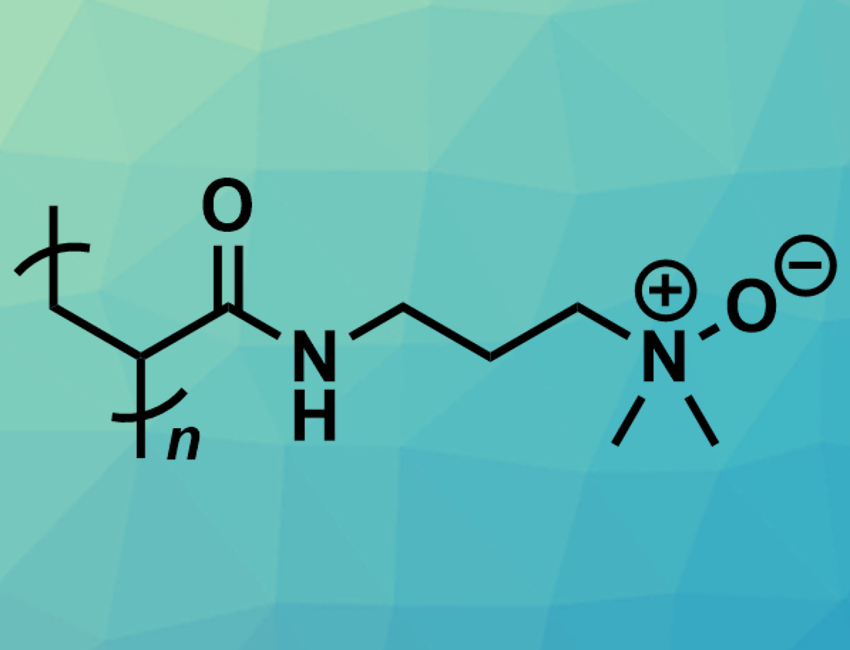Biofouling is the accumulation of biomolecules and microorganisms on surfaces. This is a problem in a variety of fields, e.g., in medical devices, membrane systems, swimming pools, or sprinkler systems. Anti-fouling surfaces can prevent the attachment of biomolecules. Zwitterionic polymers, for example, can be used as ultralow fouling materials due to their superhydrophilicity. These materials have a shell of water molecules around them, which prevents biomolecules from reaching the surface and attaching to it.
Shaoyi Jiang, University of Washington, Seattle, USA, and colleagues have developed a new type of zwitterionic polymer which acts as an effective anti-fouling material. The team was inspired by trimethylamine N-oxide (TMAO), which is a zwitterionic compound found in saltwater fishes. It has a small distance between the positive and negative charge, which leads to optimal hydration of the surface. The researchers incorporated TMAO into a polymer (PTMAO, pictured). The corresponding monomer was synthesized by oxidizing N,N-dimethylaminopropyl acrylamide and then polymerized to give the desired material in the form of a hydrogel.
The team tested the polymer’s protein adsorption properties compared with uncoated polypropylene (PP). For this, they used a solution of fibrinogen, a protein found in blood plasma. They found that PTMAO-coated surfaces achieves ultralow protein adsorption, with a reduction of over 97 % of adsorbed fibrinogen compared with PP. The adhesion of cells on PTMAO is also significantly lower than on uncoated materials. According to the researchers, PTMAO could be a broadly applicable nonfouling material for many applications.
- Trimethylamine N-oxide-derived zwitterionic polymers: A new class of ultralow fouling bioinspired materials,
Bowen Li, Priyesh Jain, Jinrong Ma, Josh K. Smith, Zhefan Yuan, Hsiang-Chieh Hung, Yuwei He, Xiaojie Lin, Kan Wu, Jim Pfaendtner, Shaoyi Jiang,
Sci. Adv. 2019, 5, eaaw9562.
https://doi.org/10.1126/sciadv.aaw9562



